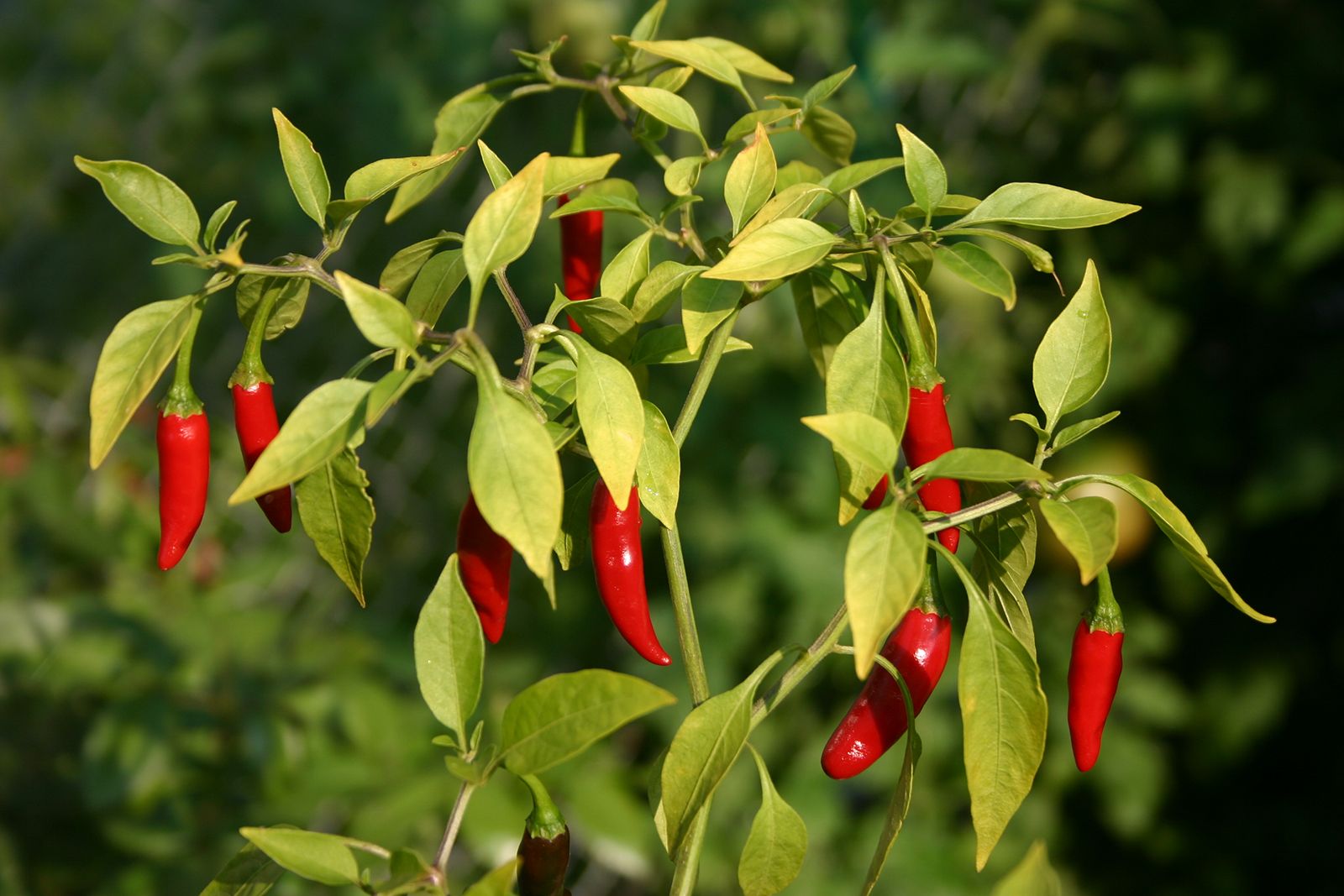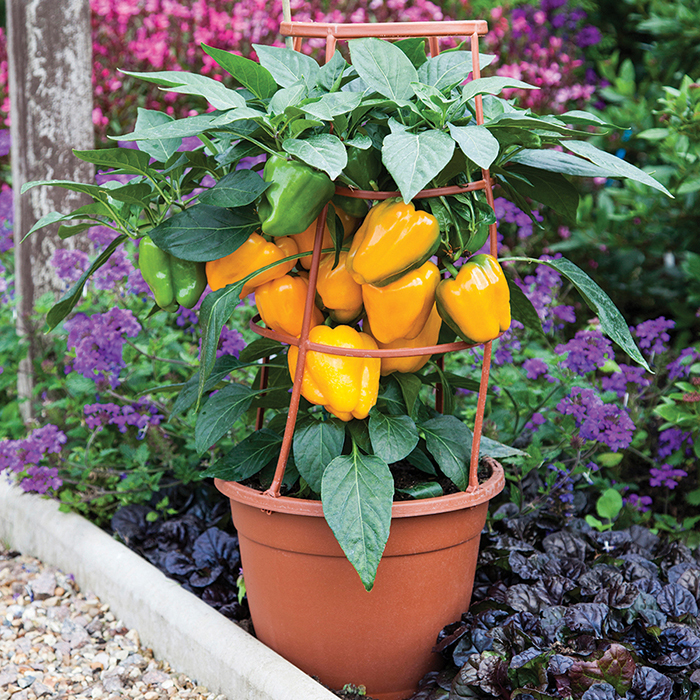If you’re looking for “pepper plant leaves curling,” then allow me to first inform you that there are over 100 different types of this plant, which is a member of the Piperaceae family and is an easy-to-grow houseplant. Pepper plants are native to Asia and America and are also quite resistant to unfavorable environments. They are the greatest plants for growing in any area of the home or garden. However, with extra care, it is possible to have plants that begin to curl. When they even turn brown, the condition worsens. In this blog, I’ll discuss a variety of causes and potential fixes for this issue.
Underwatering, excessive sunlight, less soil moisture, and pests are the most frequent causes of curling pepper plant leaves. Because of humidity, temperature stress, transplanting shock, leaf burns, age, root rot, and many other factors, pepper plants’ leaves curl inward or downward. Give it a temperature of 65 to 75 degrees Fahrenheit to cure temperature instability, and if there is root rot, cut off some unhealthy roots and move the entire plant into a new pot with new soil mixture. The issue of curled leaves will be resolved in this way.
Below In this essay, I’ll outline the sources of the problem with pepper plants’ curling leaves and how to remedy it. Although the issue of wrinkly, curled-up leaves may seem straightforward, there are actually numerous possible causes for it and solutions.
Table of Contents
Here are the 15 reasons why pepper plant leaves curling:
Too much Heat Stress
Too much heat stress can cause pepper plant leaves to curl, which is a regular issue. The pepper plant’s leaves curl as a result of being in direct sunlight. The plant feels dry since the sun has drawn out all the water from the soil, so it curls up to prevent the leaves from scorching. Plants can conserve water from leaves in this fashion, but they are unable to prevent a leaf from burning. That’s why it will eventually perish if the site isn’t altered. You can try moving it or even placing it in a position with some partial shade to prevent this. Try sprinkling the leaves with a spray bottle or spraying them with water if you still see the leaves curling.
Lack of Nutrition
Another serious problem that can affect any plant is curled leaves, which happened to pepper plants as a result of a lack of nutrition. The leaves begin to twist and wilt, and they gradually lose their life. The impact of this problem can be seen in the leaves themselves as a result of the insufficient nourishment in the potting soil. Try adding more fertilizer or watering your plant more frequently if you see the leaves curling on your plant.
Overfeeding
One of the biggest mistakes people make is overfeeding pepper plants. This is because we are really excellent at believing that providing our plants with more nutrients will cause them to grow more. When you overfeed plants, they actually curl up and eventually die rather than growing more. The easiest method to avoid this is to gradually reduce the amount of food you give your plants until they are simply receiving enough water and light.
Root Rot
Due to root rot, the pepper plant’s leaves were curling. Because of the rotting roots, the plant was unable to absorb the water from the soil. The pepper plant was unable to consume soil’s nutrients and water. To remedy this, first remove the plant from its current pot and trim the rotten roots. The leaves had started to wilt and turn brown. Move your plant to a fresh container with fresh soil after that. Now, give your plant some TLC; this will help with the root rot issue.
Water Quality
Because of the water’s poor quality, plants’ leaves are not growing well and appear to curl inward or outward. Although still green, the leaves were fading and turning brown. The plant was rapidly approaching death since it was growing feeble and malformed. The plant may wilt as a result of contaminated water from the tap, bucket, or other source. Change your plant’s water to remedy the problem, and it will quickly begin to recover. You should also remove the plant’s curled and damaged leaves.
Temperature Stress
Due to temperature stress, the leaves of your pepper plant are curling, and as a result, your plant cannot develop normally in that environment. You might try lowering the temperature to between 75 and 80 degrees Fahrenheit to see if that solves the issue. Whether not, change it to 55–70 degrees F and check to see if the plants begin to thrive.
Too much Direct Sunlight
The excessive direct sunshine was causing the pepper plant’s leaves to curl. The leaves were drooping, dying off, and turning brown. The solution is to relocate the plant to a suitable location with some shade and light. If the plant exhibits evidence of curled leaves, relocate it right away because it will be content after that.
Diseases
The fungal and black spot diseases are causing the pepper plants’ leaves to curl. Many different kinds of plants can suffer from this problem, but African violets are the ones that exhibit it most frequently. The plant appears to be dying as a result of the black spot disease, which causes the leaves to curl up, turn yellow, then brown. A fungus that assaults the cells of the leaves and then gradually takes over the entire leaf is what causes the disease, which eventually results in the death of the affected leaves. Water droplets that settle on the leaves and cause the fungus to produce few spores are what transmit the disease. If you notice that your plant has this disease, be sure to trim off all of the affected leaves as well as remove all of the diseased leaves using a fungicide.
The suggested insecticide and pesticide are listed below: Shop on Amazon.com.
Transplanting Stress
Stress from transplanting causes the pepper plant leaves to begin to curl. The roots of plants frequently suffer damage during transplantation, which shocks the plant and leads it to display symptoms like curled leaves. Carefully removing the plant without damaging its roots is one approach to avoid this. Additionally, use fresh soil to prevent the spread of the potting soil illness.
Low Watering
Because the plant is not receiving enough water, the pepper plant’s leaves are curling. Watering your plants on a regular basis is crucial, not simply when you recall when out for a walk and checking other things. Your plant will begin to droop and curl its leaves if it is not receiving enough water. It will begin to droop and die, which is a sign that it needs more water. Make sure to water your plant every day, not just when you remember to, to help maintain it healthy.
Low Humidity
Due to low humidity, pepper plant leaves are curling. Many hardy plants commonly struggle with low humidity. It might be challenging for plants to prevent their leaves from curling up when the humidity in your home drops below a particular level. The reason for this is that the plant’s leaves depend on water vapor to keep strong and alive. You should give your plants more water to prevent curling if the relative humidity in your home is too low. In order to prevent leaves from wilting, you should also spray water on the soil or just provide water to it.
Shop on Amazon for the best humidifier for plants.
Insect Infestation
When pepper plants are infested with insects, the leaves may curl. The main leaves of the plant have curled around the edges, giving it a spiky appearance. It becomes withered and discolored due to the insect. The health of the plant as a whole is being harmed by the insects consuming the leaves. This indicates that a pesticide or insecticide is necessary to get rid of all the pests present on the plant.
Purchase insecticides and pesticides from Amazon.com.
Overwatering
All sorts of plants, not only pepper plants, are susceptible to the overwatering condition that causes pepper plant leaves to curl. Overwatered plants that are frequently moist will begin to wilt and droop. The best course of action is to ensure that your plant receives just enough water—not too much. You must first wait for the plant to thoroughly dry the soil before beginning to give it less water to solve this issue. Additionally, remove all of the curled leaves.
Lack of Sunlight
The leaves of the pepper plant will begin to curl upward, turn yellow, and ultimately turn brown if it does not receive enough sunshine. If you reside in a low-light environment, you can either move the plant to a brighter position or use artificial growth lights to provide it with extra light. To allow room for fresh leaves to grow, pluck and discard any leaves that become brown. To create food, plants always want to receive a few hours of sunlight or at least some partial light; if they don’t, they will begin to wilt, which is an indication of insufficient light.
Shop on Amazon for the best grow lights for plants.
Old age
As the plant ages, the pepper plant’s leaves are beginning to curl. The plant displays symptoms like wilting and has lost all of its green leaves. It’s crucial to water your plant every day, but don’t be afraid to water it more frequently if you notice that it is wilting and needs more. The third option is to replace the plant with a fresh one if you observe that it does not appear to be in good health.
How to fix my pepper plant leaves curling?
Last but not least, give the plant a decent slow release or general fertilizer a few times within 2 months of the growing season to ensure that it has enough water and nutrients.
How To Prevent Curling?
Place it in some shade to avoid the leaves from curling, and give the soil a good soaking to keep it hydrated. If not, wait a little longer; if they don’t develop green in 1-2 days, they might come back to life because of too much sunlight or watering. Remove the leaves in this situation and allow the new leaves to grow. Don’t overwater your plant to avoid overwatering.
How do you care for pepper plants after leaves curling?
When caring for pepper plants, it’s important to provide them the right amount of water, sunlight, and nutrients at the right time. If you see a pest infestation, don’t panic; simply use an insecticide or pesticide to kill the pests or at the very least make them flee.
Final Thoughts
Why are the leaves on my rubber plant curling?
Why are the leaves on my polka-dot plant curling?
Why are the leaves on my prayer plant curling?
Why are the leaves on my snake plant curling?



